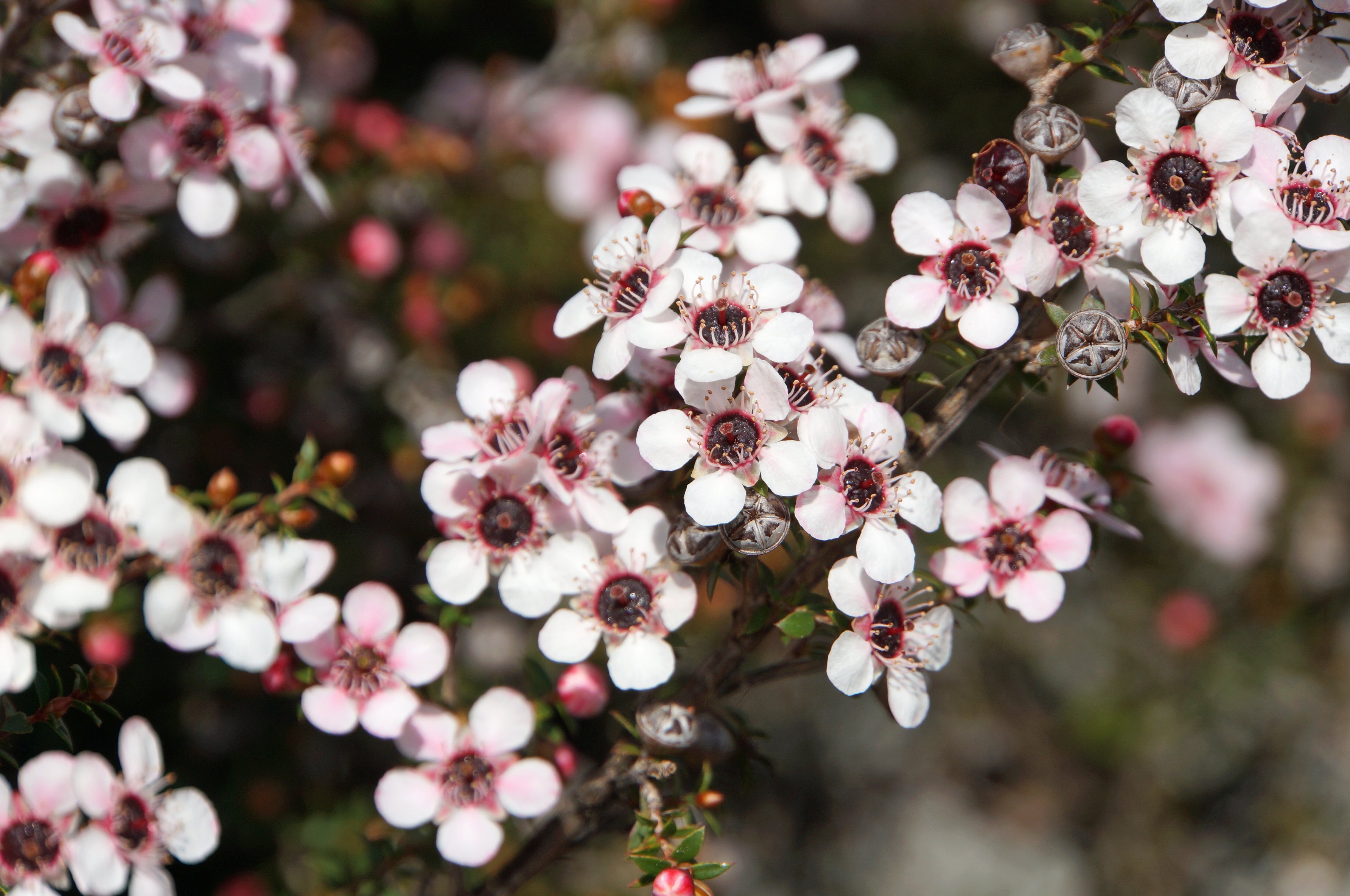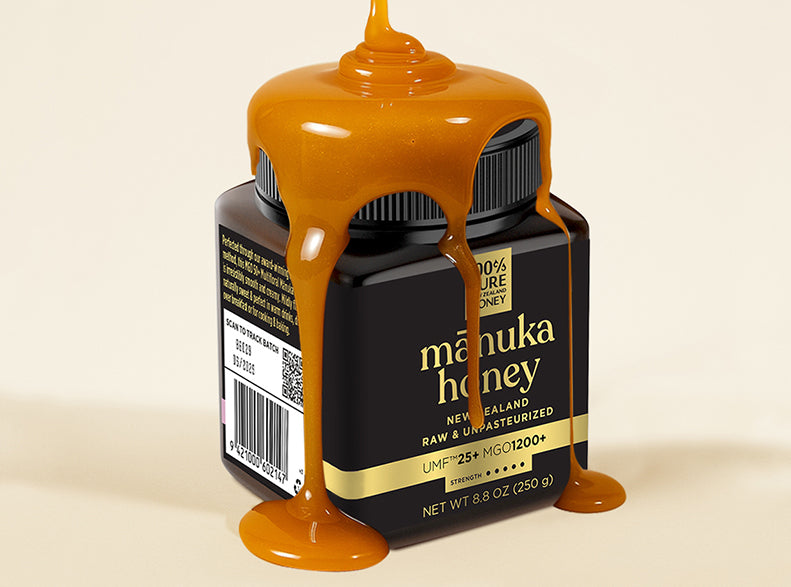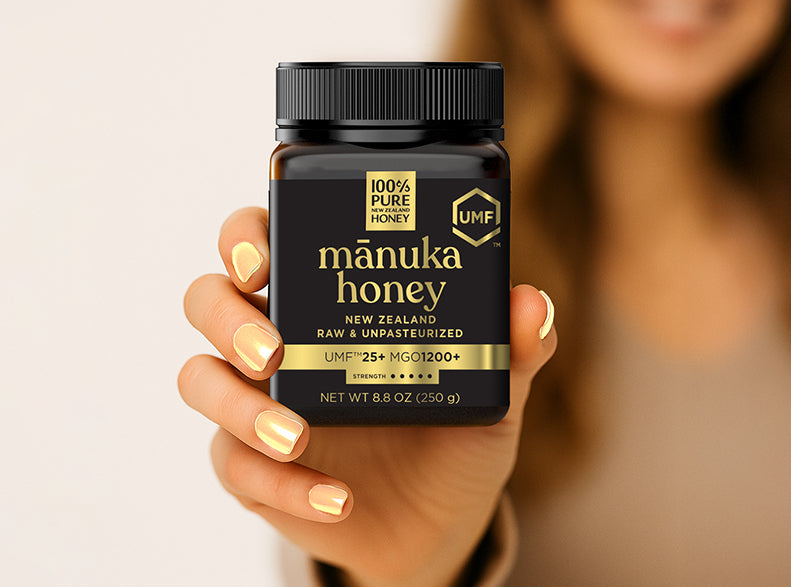UMF®: Your 100% Guarantee of Quality
Ever wondered what those numbers on our jars really mean? They’re not just numbers—they’re your 100% guarantee that you're getting the purest, most potent mānuka honey out there.
When you see UMF® (Unique Mānuka Factor) on the label, you’re looking at a powerful indicator of quality. It’s the gold standard for mānuka honey, measuring everything from its antibacterial properties to its overall freshness. The UMF® rating gives you a snapshot of the honey's unique, natural compounds that ensure you're getting exactly what you need—100% pure, potent mānuka honey.
What Does UMF® Measure?

MGO (Methylglyoxal)
The natural compound responsible for mānuka’s powerful antibacterial activity. MGO levels indicate exactly how much of this compound is packed into your honey, ensuring you're getting the most effective honey possible.

Leptosperin
A natural marker that proves the honey’s true mānuka origin.

DHA (Dihydroxyacetone)
A compound that converts into MGO over time, increasing the honey’s potency.

MGO: Pinpointing Potency
When you see MGO on the label, you know exactly how strong your mānuka honey is. MGO is the compound responsible for its antibacterial action, and the MGO rating shows the minimum level of Methylglyoxal in your honey. The higher the MGO, the more potent the antibacterial benefits.
For example, MGO 400+ tells you that your honey contains at least 400 mg of Methylglyoxal per kilogram. That’s serious potency for supporting your health and vitality, with natural energy and immune-boosting power. It’s 100% nature’s gift, bottled just for you.

Choosing the Right Honey
When it comes to choosing the right mānuka honey for your needs, the UMF® and MGO ratings guide you to the 100% pure experience you’re looking for:
- UMF® 5+ to 10+: Perfect for those looking for a mild antibacterial honey to sweeten your day with a touch of natural goodness.
- UMF® 15+ to 20+: For those who want more potency in their honey, with an extra boost of antibacterial strength.
- UMF® 20+ and above: For the ultimate in potency—perfect for your more intense wellness rituals.

The Assurance of Authenticity
Not all mānuka honey is created equal. To make sure you're getting the best, look for the UMF® certification mark. It guarantees that the honey is 100% genuine, sourced from New Zealand and tested to meet the highest standards of quality. If it’s not UMF® certified, you might not be getting the full benefits that100%genuine mānuka honey provides.
MGO to UMF Calculator
Convert between MGO (Methylglyoxal) and UMF (Unique Manuka Factor) ratings to understand the potency of your manuka honey. Discover the UMF rating of your manuka honey by selecting the MGO value.


